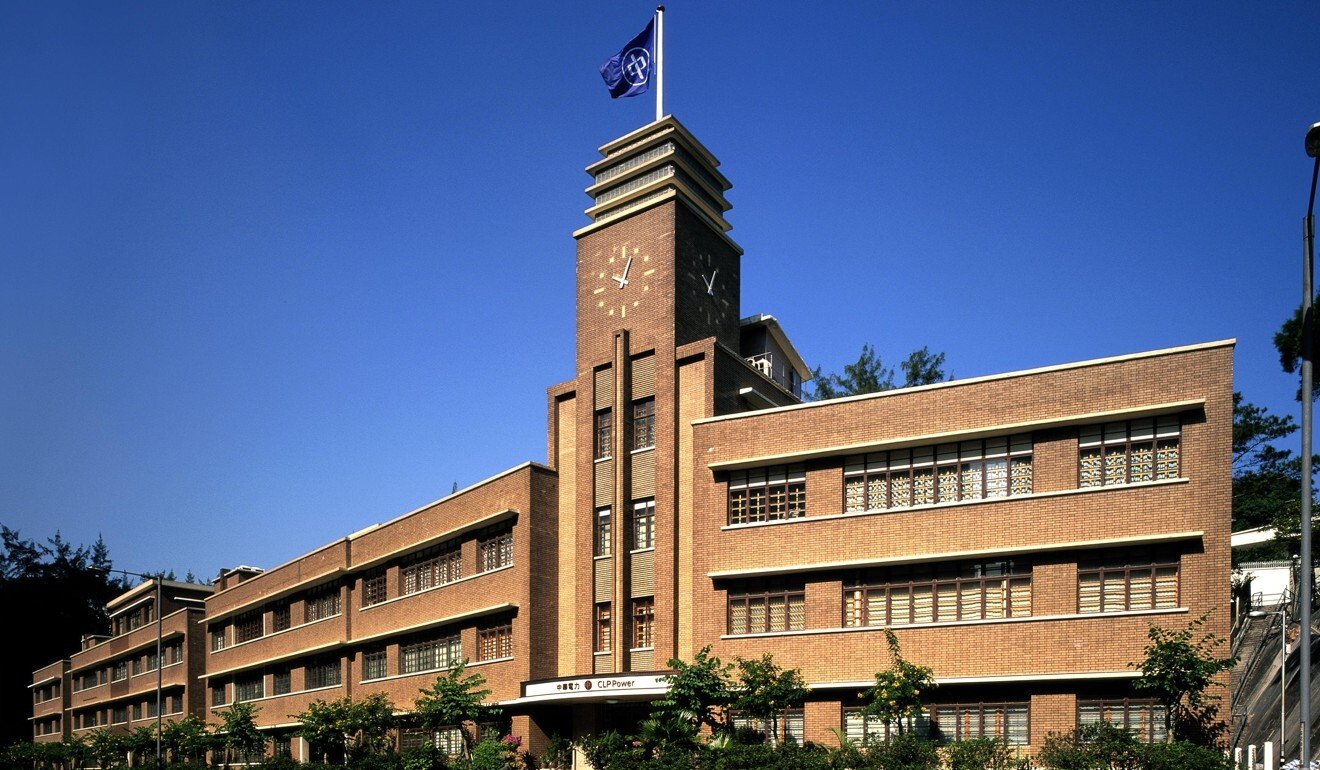At 147 Argyle Street, in Hong Kong’s Kowloon district, a narrow brick clock tower that has been telling the time for 80 years stands solemnly next to demolished blocks, where luxury residential skyscrapers will stand beside it by 2022.
Perched beneath the stately homes of Kadoorie Hill, the clock tower is a reminder of what was once the stately headquarters of China Light and Power (CLP). Opened in 1940, the iconic tower is listed as a grade one historic building, and has been under preservation since the company decided to move to a bigger office in 2012.
The majority of the pearly white houses on Kadoorie Hill, designed by in-house architects of the Kadoorie Estates, are an amalgam of Bauhaus and streamline moderne sensibilities.
Yet Charles Lai, a PhD candidate at the University of Hong Kong’s Department of Architecture, says that only the CLP headquarters was a “clear example of art deco architecture”.
Whereas the duplexes and single-family homes possess Bauhaus-influenced structural asymmetries and streamline moderne features, such as smoothed edges reminiscent of a ship’s hull, the CLP building was designed with the geometric proportions and angular edges of art deco.

Architectural showcase
The CLP compound was originally a three-part building, consisting of a clock tower and two residential blocks called St. George’s Mansions. Initially CLP was first headquartered at the tower, but later also acquired the mansions when its business expanded.
The compound was the brainchild of Shanghai architectural firm Davies, Brooke & Gran, and bore some resemblance to the theatres the firm designed in Shanghai in the 1930s.
Fredo Cheung, an experienced architect and lecturer at Hong Kong University’s architectural conservation division, says that the CLP complex was a visual representation of the architectural transitions of the 1930s.
Extravagant art deco buildings checkered Shanghai by 1929, but as the depression set in, architecture veered off in a more modern, less excessive direction.
Though “predominantly an art deco building”, 147 Argyle Street has touches of streamline moderne in its sweeping horizontality, and influences from the Bauhaus school in its functionalism and simplicity.
For more than 70 years, the buildings stood firm on granite bedrock that was tamed to house the Kadoorie Hill neighbourhood in the early 1930s.
Now, the bedrock where St. George's Mansions stood is being readied to house a new wave of modern residents.

The landmark clock tower, the most sentimental and iconic part of the conjoined buildings, will remain a fixture of the neighbourhood, telling the time for generations to come.
In 2011, the Town Planning Board approved a redevelopment proposal by CLP. Sino Land, the Hong Kong development firm behind acclaimed historic redevelopment projects such as the Tai O Heritage Hotel on Lantau Island and The Fullerton Hotel in Singapore, joined the project in 2017.
New lease of life
Cheung, whose parents went to school in the neighbourhood and who lives in Argyle Street to this day, sees the project as conservation rather than preservation.
He views preservation as the freezing of built heritage – all aspects of man-made historic environment, such as houses, commercial buildings, monuments, roads and railways – whereas conservation is a process that, while preserving the historical fabric of the building, allows for change so the function of the building fits the needs of the present-day community.

CLP and Sino Land plan to turn the clock tower into a community facility with public access for non-profit use, while the old St. George’s Mansions will be turned to a new residential development.
David Simmonds, CLP’s chief administrative officer, believes “the heritage, architectural and social significance of the clock tower make it a perfect home to an electricity museum and heritage hub”.
The clock tower will also house the archives of the Hong Kong Heritage Project, an initiative by Sir Michael Kadoorie to preserve history and promote the appreciation of heritage in Hong Kong.
Simmonds says CLP sees the new use of the clock tower as the perfect reinvention of the company’s historic headquarters.
“We envisage the clock tower to be a place to tell stories of the people, culture and driving forces – including development of the electricity industry – behind Hong Kong’s continuous development,” he says.
Collective memory
Conserved buildings are not simply important because of the architecture that is being preserved, butt also because they are a living story of the communities they exist within.
To those living in the neighbourhood, the clock tower has served as a landmark – a part of their collective memory.
“Every day on our way between home and school, we would pass right by the clock tower,” says Benjamin Rees, a 70-year-old who lived in the area as a child.

At the time he did not have a wristwatch to check the time. “I had to look at the clock to make sure I was on time for school,” he says.
“That was fine when it was working, but once in a while when it stopped for some reason, we’d be uncertain what time it was.
“It’s hard to put the feelings into words – it’s been an iconic landmark for decades, and the centre of some of my memories of this area.”
Cheung, vice-president of the Hong Kong Institute of Conservationists, who has lived in the neighbourhood for decades, also considers the clock tower to be an icon.
“My father and grandfather … would talk about how they would frequently look down Argyle Street and see the clock tower,” he says.
“So, in a way, these historic buildings are actually a window back in time for us to see what Hong Kong was like back then.
“It is also a testament to the efforts of the people who actually made this city the great city it is today.”







